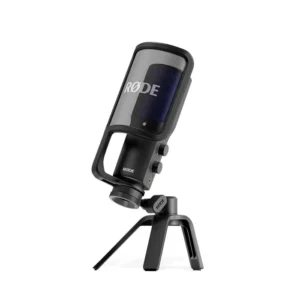RØDE NT-USB+ is a game-changer for those seeking XLR recording spliced with the convenience of USB.
RØDE NT-USB+ microphone review
If the distorted background audio from the average Call of Duty player is any indication, investing in a quality microphone is a very optional afterthought for the average PC user. The thing is, the versatility provided by a quality microphone goes beyond stopping random people online from fumbling to turn down their in-game volume.
A quality microphone leads to a more accurate recreation of your voice, ideally isolating it from any number of other noises on the average in-home soundscape that may distract colleagues during Zoom calls. It also opens up doors for podcasting and other content creation, including vocal or instrument recording. Podcasting, content creation, and music recording are typically the domain of XLR microphones, but along comes the RØDE NT-USB+ to spice things up.
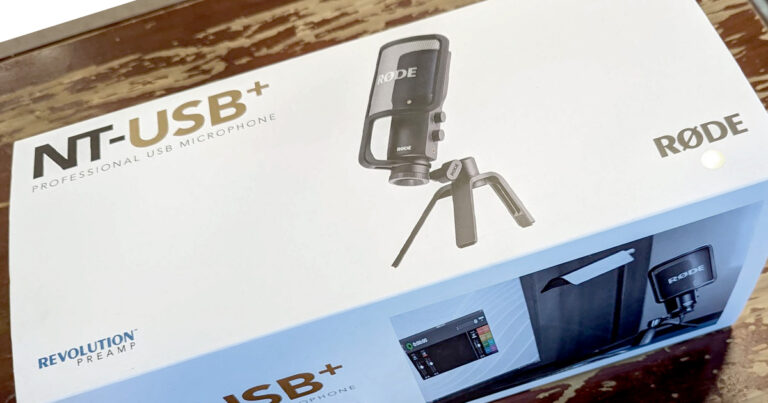
RØDE NT-USB+ microphone value for money
Let’s not mince words: the RØDE NT-USB+ microphone isn’t cheap. As far as USB mics go, you can grab something for under $100 like the Thronmax M8 Pulse or mid-range like the Blue Yeti range. Up that budget closer to $300 and you start to get into high-end range, where you’ll find the likes of the HyperX QuadCast S or the Blue Yeti X.
I’m a big fan of those last two mics in particular, most notably because of a combination of high-quality recording and the recording versatility of multiple polar patterns. At the time of review, there weren’t any massive savings to be found for the RØDE NT-USB+ microphone. In fairness, the same is true of the older HyperX QuadCast S and Blue Yeti X, both of which have held their value well.
RØDE NT-USB+ microphone setup
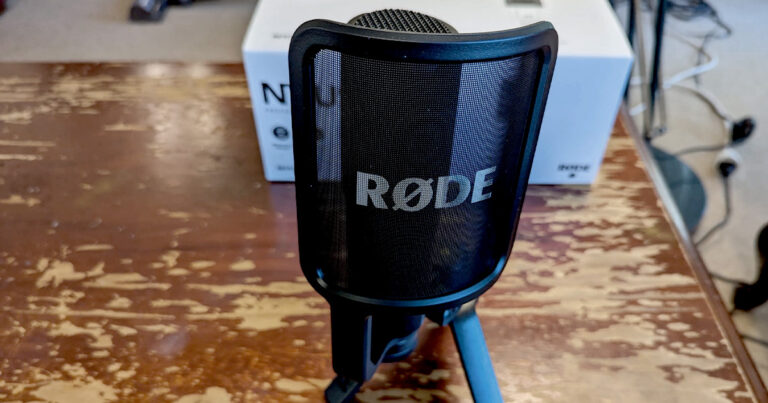
When I reviewed the RØDECaster Pro II audio mixer, I marvelled at the simplicity of guiding new users through the initial steps of nailing fantastic sound. The thing is, as awesome as the RØDECaster Pro II is, it still requires a lot more initial setup and configuration than a USB microphone to get recording.
That’s not the case with the RØDE NT-USB+ microphone. It’s good to plug-and-record out of the box, which helps to add to the overall versatility, considering it’s compatible with not only PC and Mac computers but also Android and iOS devices. The main downside here is I wish there was a gain dial on the microphone, removing the need to tweak via RØDE Connect software or the RØDE Reporter app.
On the positive front, the RØDE NT-USB+ comes with a practical desk stand that’s low-ish profile. Combo that with an included generously sized pop filter, and you could viably start recording out of the box without any tweaking.
RØDE is a renowned leader in audio quality, known for a range of audio products. Designed and manufactured in Australia, these products include microphones, headphones, interfaces and mixers, software, and accessories.
RØDE NT-USB+ software and tweaking

The RØDE NT-USB+ has a 3.5mm jack on the base for zero-latency headphone monitoring. This monitoring is supported by two dials above it: one to adjust the headphone levels and the other to adjust the monitor mix control. I’ve already bemoaned the lack of a gain dial on the mic above, but this is also where other high-end USB mics offer different polar patterns for more than just voice-vs-mic recording.
It makes the RØDE NT-USB+ more focused on its recording capabilities, although there’s platform versatility to help balance things out. On PC or Mac, users can download RØDE Connect for free. When I fired it up on PC, I was met with a firmware update message, which I had to agree to before proceeding. Afterwards, there are really only a few tweak options.
The first is the all-important input level, so there’s more recording of your voice and less recording of the like-clockwork person outside with their lawnmower. Too specific? Basically, the higher the input level, the greater the microphone sensitivity, which allows for greater range but makes the high-quality microphone more sensitive to background noises.
HPF is the next setting, with either 75 or 150 as options. It’s a shame RØDE Connect doesn’t have a tutorial or hover-over explanations, though my internet sleuthing tells me this is a high-pass filter, which is handy for eliminating background noise. There’s also Noise Gate to help reduce background noise, and enabling Compressor offers better balance and more consistency to voice recordings. As you’d hope, enabling these settings means simple tweaks get you closer to better recording quality faster.
The other two settings are Aural Exciter and Big Bottom. Euphemism naming conventions notwithstanding, Aural Exciter boosts higher frequencies for clarity and Big Bottom provides better depth. Both of these settings did what they claimed to do in my Audacity recording tests. All of these options are available on the RØDE Reporter app, albeit there was something wrong with the icon positioning relative to where you have to touch them on my Google Pixel 7 Pro.
RØDE NT-USB+ microphone recording quality
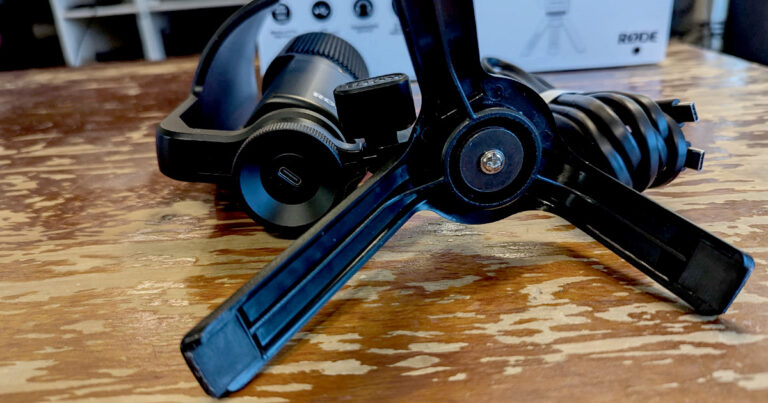
Anyone familiar with RØDE products, be they XLR or USB microphones, knows that they’re getting quality. The RØDE NT-USB+ microphone is no exception to that rule. That lack of a smorgasbord of settings has the benefit of honing recording into what really matters.
The best bit is any tweaks made in the software and app are saved on the microphone itself, meaning you can get a feel for the best tweaks, relative to the distance to what you want to record, and replicate in other locations. If anything sounds off after a sample recording, fire up the corresponding software or app to make quick changes.
I don’t have any instruments lying around, so all of my tests were with my voice. Outside of what felt like a too-high input setting out of the box, the RØDE NT-USB+ microphone was a cinch to get to great results in my Windows 11 PC and Google Pixel 7 Pro tests.
This is normally where I’d offer a side-by-side recording sample via Reverb, but there was a strange amount of static in my Reverb recordings for the NT-USB+. My offline recording tests via Audacity didn’t have any of those issues, and the recording quality was as great as you’d expect from a brand like RØDE.
Is the RØDE NT-USB+ microphone worth buying?
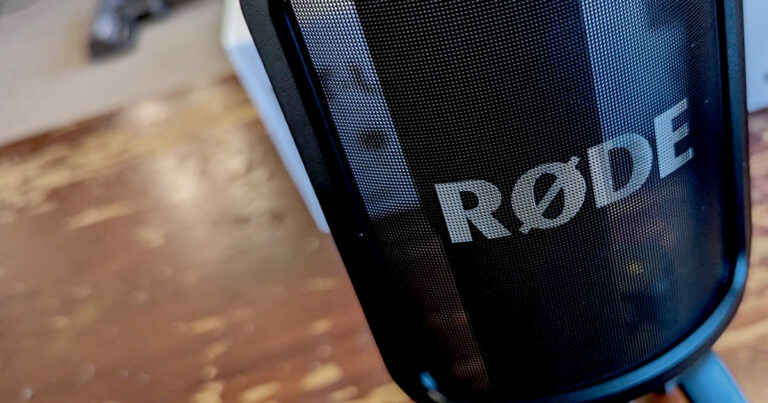
My biggest disappointment with the RØDE NT-USB+ microphone is the lack of multiple polar pattens, so it’s not something I can use as easily for multi-person podcasting. If you’re not turned off by the price, you’re investing in a high-quality USB microphone that’s just as up to computer recording as it is on mobile devices.
How we review microphones
Our microphone reviews start with a price comparison. We evaluate the RRP of a microphone in comparison to its features and versatility, compared to what else is available on the market. A microphone can cost more if it has the features to back up the higher price tag.
The next part of the evaluation is setup. We love a microphone that’s ready to go out of the box and love one that offers on-mic controls for basic tweaks like gain levels. Outside of those controls, we’ll evaluate companion apps and software to see how quickly it’s possible to get great sound out of a microphone.
Then we test the quality of the recording. We’ll test the microphone in a mix of practical applications—video meetings or voice chats and voice-vs-mic recordings—and compare against sample clips from competing microphones.
RØDE NT-USB+ FAQs
While the RØDE NT-USB+ microphone is a steep investment, it’s also a high-quality and versatile one that’s worth considering. Buy the RØDE NT-USB+ if you want high-quality recordings of a single voice or instrument on a PC or mobile device.
Related Articles





